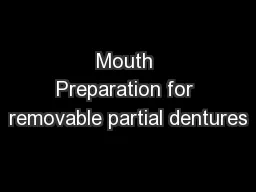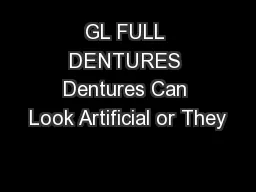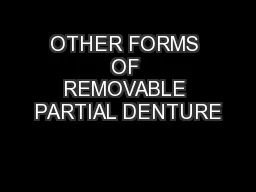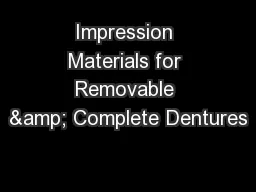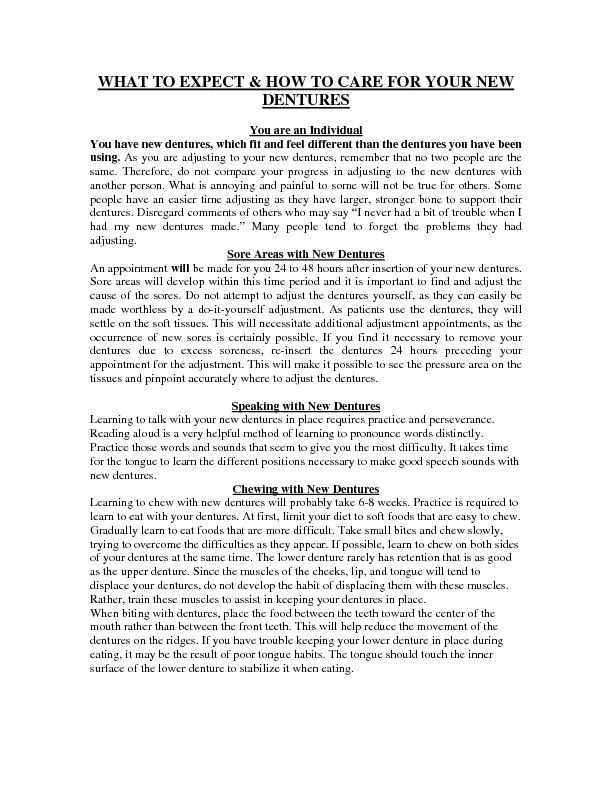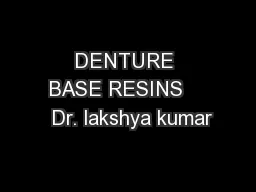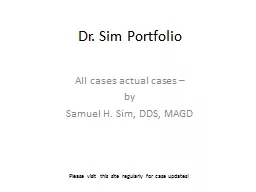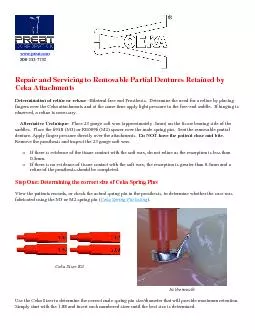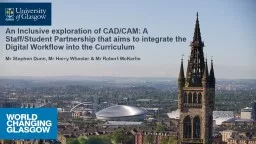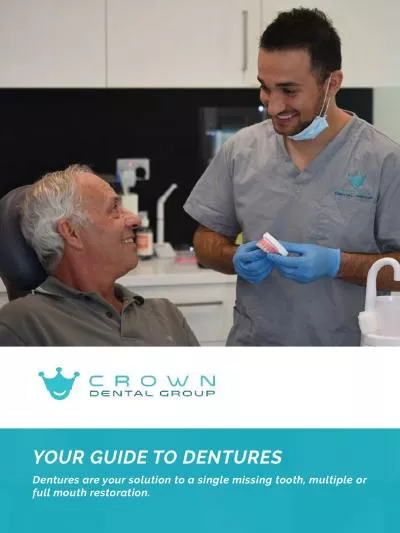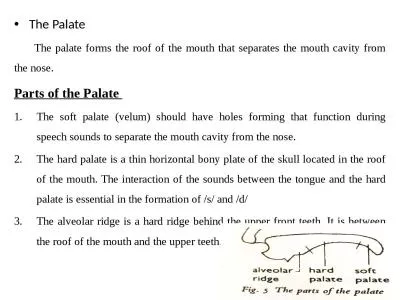PPT-Mouth Preparation for removable partial dentures
Author : debby-jeon | Published Date : 2017-10-28
Dr Nadia Ereifej Indications for RPD therapy Vs Fixed prosthodontics Replacement of teeth and tissue aesthetics are of prime concern Long span edentulous space
Presentation Embed Code
Download Presentation
Download Presentation The PPT/PDF document "Mouth Preparation for removable partial ..." is the property of its rightful owner. Permission is granted to download and print the materials on this website for personal, non-commercial use only, and to display it on your personal computer provided you do not modify the materials and that you retain all copyright notices contained in the materials. By downloading content from our website, you accept the terms of this agreement.
Mouth Preparation for removable partial dentures: Transcript
Download Rules Of Document
"Mouth Preparation for removable partial dentures"The content belongs to its owner. You may download and print it for personal use, without modification, and keep all copyright notices. By downloading, you agree to these terms.
Related Documents

